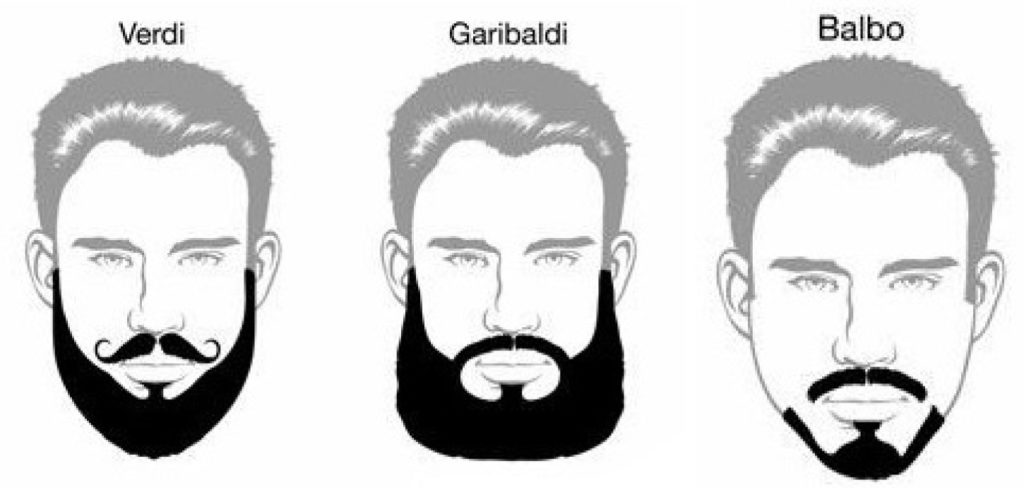I don’t like the grubby look of Italian males these days – more than five o’clock shadow but less than an actual beard. Beside the unkempt appearance, it indicates a certain laziness. But, I’m sure Italian men with this look consider it macho and alluring to women.
In Roman times, the Italic people were unique in their treatment of facial hair. From Consul Marcus Claudius Marcellus, the man who extended Italy to the Alps in 222 B.C., to Emperor Trajan who extended the empire to its maximum limits in A.D. 117, the Roman style was no facial hair. I always assumed that the practice was meant to convey virility to Rome’s enemies. Shaving daily was quite a chore, and sometimes bloody, with the instruments of the day.
Given the military bent of Roman culture, shaving daily was part of the discipline required of legionaries, along with humping 60 pounds of supplies for twenty miles and building a fort every night. Unless things have changed in the U.S. military, our soldiers and Marines on exercise must shave daily in the field…with cold water (Perhaps they now allow battery-operated shavers). Imagine the impression such men make on the enemy: “I can waste your ass, and still go on a date later!”
However, I learned that shaving was more than a military discipline thing for the Romans. We know they loved their baths, so shaving was part of Roman sanitary standards. The romantic poet Ovid advised his fellow Italic people to visit the barber (tonsor) frequently for a shave and a haircut. They should have their fingernails and toenails trimmed as well. Ovid recommended snipping nasal hair, shaving armpits, whitening teeth, and working-out shirtless for that knock-out tan women loved. Pompeii wall paintings invariably show bronzed Roman men cavorting with pale-skinned females. Despite his service to Roman lovers, Ovid’s public sexual obsessions got him exiled to the Black Sea by Emperor Augustus.
Coincidentally, September 23rd was the birthday of Augustus. All of his statues show him clean-shaven. However, on a number of occasions he let his beard grow, as when one of his generals lost three legions in Germany. Such was a Roman mourning custom – not shaving sent a message of deep sorrow. Also a custom was allowing adolescents to grow stubble right up to manhood. Augustus didn’t start shaving until he was 23-years old. He had dirty blond hair, so I imagine his beard wasn’t obvious until then. Every emperor after him was clean-shaven until Hadrian (A.D. 117) brought beards into style.
Hadrian was a “Greekling,” loved everything about Greek culture including beards. However, some chroniclers believe he grew a beard to hide facial blemishes, others believe he thought it gave him a tougher image. Nevertheless, most of the emperors after Hadrian had beards, including the famous Marcus Aurelius. It wasn’t until Emperor Constantine (A.D. 324) that shaving made its return to the throne.
I always thought that the Romans called their northern enemies “barbarians” because they usually had beards. Beard in Latin and Italian is barba. But, the word barbarian actually came from the Hellenic βάρβαρος (bárbaros) meaning “babbler.” If the Greeks didn’t understand your lingo you were a barbarian. Just coincidentally, those folks often had beards, which made the label logical to the Italic people who adopted the term.
Throughout northern Europe and the Mediterranean, beards were the norm. Greeks trimmed their beards, Persians and Babylonians curled theirs. Jews let them grow wild in accordance with the Torah. Only the Egyptians shunned body hair altogether. Some say to keep out lice, others to purify their bodies – in this regard they had more in common with their Roman occupiers than their own eastern neighbors.
So much for this pep talk on being clean-shaven. If you insist on growing facial hair, a visit to Barbaware.com can give you some Italian styles to copy, based on our favorite sons of the past – beards with some Italian history. -JLM


all i know is the grayer the beard the harder to shave..a friend explained why….part of the aging process, and lack of moisture ….managgia…….
With the current mask mandates it has become difficult to appreciate a well manicured beard! 🙁
The grubby look is not sharp and is distracting.
A person doesn’t look well kempt.